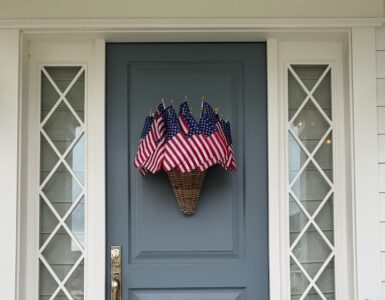USU Extension Family and Consumer Science Educator Teresa Hunsaker rates the various options.
Before we can answer the question of “What to use?”, let’s take a look at a bit of general information about household odors. Our homes have all kinds of porous surfaces—wood, fabrics, carpets, drywall, etc. We also have lots of places that odors grow and formulate—drains, disposals, garbage pails, air ducts, just about anywhere that is warm and moist, etc. All said and done, the possibilities are endless for either holding odors, or forming odors.
As the winter starts to break and we move into Spring, this is a perfect time of year to freshen up the house. Our homes have been closed up all winter to keep the cold air out, so we may be ready to tackle a few key projects to help us with this.
FIRST THINGS FIRST
The first thing I need to do is to be “real” about the smells in my home. Identifying the source of an odor and remedying the problem is the only way to keep your home smelling good. First, figure out where the odor is coming from. Is the offensive smell from rotting food? Pet soil? Musty basement? Food splatters inside the microwave? Dirty socks stuffed under the couch? You get the idea.
Get serious about running some bleach through all the drains, vacuum rooms thoroughly—under beds, behind doors, in closets, wash and rinse all garbage pails, clean up and organize closets—let the fresh air into a stuffy closet once the weather breaks, clean the hood filter on your stove, give your refrigerator a good cleaning, wash or clean all bedspreads and pillows, dust thoroughly—including silk plants and trees, wash or clean chair pads and kitchen curtains.
PRODUCTS TO HELP
Odor Absorbers:
• Lysol Disinfectant Spray
• Baking Soda
• Activated Charcoal
• Clay Based Wet Clumping Kitty Litter
Fragrance Enhancers:
• Glade Air Sticks (or other similar product)—pretty effective, some designed with “no spills” advantage—they are like a deodorant stick. Limited fragrances. Cost effective—especially with coupons or on sale. Last a fair amount of time.
• Room Sprays—heavier particles that leave a nice odor, but settle or build up on walls if sprayed randomly. Scent only lasts for a while. Good for quick and immediate fragrance needs. Not my favorite, but inexpensive and quick.
• Scented Candles—effective for longer term fragrance, but have their disadvantages: spills, fire, smoke residue build up on ceilings, curtains, walls, and even lead if it is a lead based wick.
• Scentsy—flameless, therefore safer, spills still a problem, but very effective in dissipating fragrance through the home. Wide variety of fragrances.
• Diffusers and Essential Oils—spills can destroy fabric as it is very tough to get out, eats through many finishes on wood surfaces, but are very effective in diffusing fragrance around the home. Cost effective—especially watching sales.
• Potpourri—a little more costly, because the intent is to also be decorative. They too can destroy wood finishes, they get dusty, don’t last as long—and not as effective for filling the whole house with fragrance. Do look nice in a tray or glass decanter, etc. Because dyes are often used in the commercial ones they can discolor some containers, baskets, or surfaces.
• Simmering Potpourri—effective at filling the home with fragrance, but need to be watched and tended—they dry out quickly and can burn onto the surface of the container. Easy to make homemade.
Note: There are many people who have fragrance sensitivities that will not be able to tolerate any (or only some) of these home fragrance enhancers. Many of them can also cause skin irritation when in concentrated contact with the skin—thinking of kids getting into and playing with them.
You can contact Teresa at the USU Extension Office.















Add comment